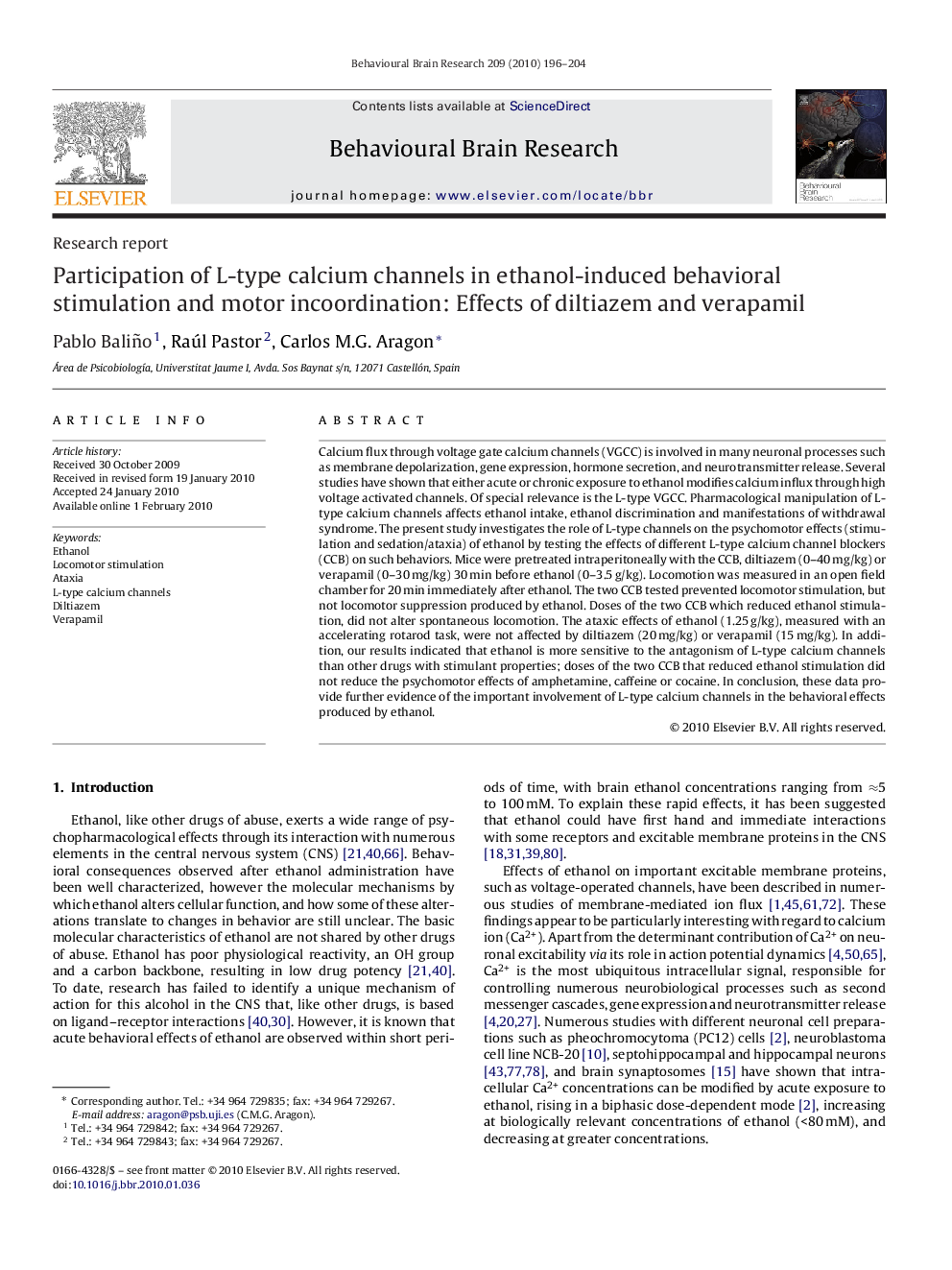| کد مقاله | کد نشریه | سال انتشار | مقاله انگلیسی | نسخه تمام متن |
|---|---|---|---|---|
| 4314221 | 1290030 | 2010 | 9 صفحه PDF | دانلود رایگان |
عنوان انگلیسی مقاله ISI
Participation of L-type calcium channels in ethanol-induced behavioral stimulation and motor incoordination: Effects of diltiazem and verapamil
دانلود مقاله + سفارش ترجمه
دانلود مقاله ISI انگلیسی
رایگان برای ایرانیان
کلمات کلیدی
موضوعات مرتبط
علوم زیستی و بیوفناوری
علم عصب شناسی
علوم اعصاب رفتاری
پیش نمایش صفحه اول مقاله

چکیده انگلیسی
Calcium flux through voltage gate calcium channels (VGCC) is involved in many neuronal processes such as membrane depolarization, gene expression, hormone secretion, and neurotransmitter release. Several studies have shown that either acute or chronic exposure to ethanol modifies calcium influx through high voltage activated channels. Of special relevance is the L-type VGCC. Pharmacological manipulation of L-type calcium channels affects ethanol intake, ethanol discrimination and manifestations of withdrawal syndrome. The present study investigates the role of L-type channels on the psychomotor effects (stimulation and sedation/ataxia) of ethanol by testing the effects of different L-type calcium channel blockers (CCB) on such behaviors. Mice were pretreated intraperitoneally with the CCB, diltiazem (0-40Â mg/kg) or verapamil (0-30Â mg/kg) 30Â min before ethanol (0-3.5Â g/kg). Locomotion was measured in an open field chamber for 20Â min immediately after ethanol. The two CCB tested prevented locomotor stimulation, but not locomotor suppression produced by ethanol. Doses of the two CCB which reduced ethanol stimulation, did not alter spontaneous locomotion. The ataxic effects of ethanol (1.25Â g/kg), measured with an accelerating rotarod task, were not affected by diltiazem (20Â mg/kg) or verapamil (15Â mg/kg). In addition, our results indicated that ethanol is more sensitive to the antagonism of L-type calcium channels than other drugs with stimulant properties; doses of the two CCB that reduced ethanol stimulation did not reduce the psychomotor effects of amphetamine, caffeine or cocaine. In conclusion, these data provide further evidence of the important involvement of L-type calcium channels in the behavioral effects produced by ethanol.
ناشر
Database: Elsevier - ScienceDirect (ساینس دایرکت)
Journal: Behavioural Brain Research - Volume 209, Issue 2, 19 June 2010, Pages 196-204
Journal: Behavioural Brain Research - Volume 209, Issue 2, 19 June 2010, Pages 196-204
نویسندگان
Pablo Baliño, Raúl Pastor, Carlos M.G. Aragon,